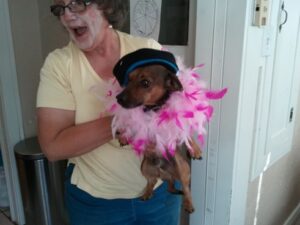 Inspiration To Become A Cake Decorator
Inspiration To Become A Cake Decorator
When I was in ninth grade, I moved to Salt Lake City. I was intimidated by the size of the building, the number of students, and how challenging the work was. My grades dropped into the bucket. It was a long year!
At Easter, I noticed a beautiful sugar egg in the home economics room. It was the upcoming project. I asked if the ninth graders were going to do it, only to find that it was reserved for the Juniors and Seniors. I knew I would never get to make one because we moved too often.
I wanted to make that egg. I asked the teacher if I could please have a copy of the directions. She gave them to me. I had been INSPIRED, and the teacher had responded.
I had none of the hard materials needed for the project. So, I improvised. Instead of a plastic egg mold, I used an empty Leggs nylon container. Instead of pastry bags, I used bread sacks with a hole cut in a corner. Instead of plastic bunnies and chicks, I used hand-drawn figures. My mom had those eggs for years. They were terrible! I was happy with them and thought they were beautiful. This initial inspiration and desire began a 50+ year love affair with cake decorating.
One of the most enjoyable things I did with this decorating spark was teach thousands of children and adults to make gingerbread houses. My family and I gave hundreds away to homeless shelters and community centers. I taught all my children and grandchildren to make them. Every year, I helped my kids help their friends make gingerbread houses in their school classes. I’ll bet you can tell this became a family tradition. In fact, just this Saturday, Jodie went to Maggie’s special needs class, and they all made a gingerbread house.
Just Before Christmas Essay Competition
I am sharing this story of my fascination with decorating because in 2010, I hosted a Just Before Christmas Essay Competition. The prize was a kit so the family could do this wonderful activity.
The topic was The Inspiration Connection: How Being Inspired Transforms the Quality and Effectiveness of Our Education. The winner was a friend of mine who lived in Nevada. Her boys were older teens. I sent the kit, and they all had a fabulous time making their houses.
Jody Jarvis was a homeschool mom. However, her beautiful essay applies to all families regardless of how you choose to educate your kids. It applies to school subjects and anything we want to inspire our kids to learn or participate in. When decorating came into my life, I was inspired. Jody shares a great example of how inspiring her kids and being an example increased their desire to learn and participate in a family activity.
All these years later, Jody lives just a couple of miles from my home. I have visited her and recently attended a big family event. It was fun, and one of the things that got me to reread her winning essay. Enjoy.
The Inspiration Connection: How Being Inspired Transforms the Quality and Effectiveness of Our Education
by Jody Jarvis
When educational experiences are required, the result is bored students, who daydream, who memorize the minimum required, and forget it the next day. For the student, the learning experience seems to drag on forever (“Are we done yet?”), and minutes seem like an eternity. For the teacher, it seems like pulling teeth just to get the student to participate.
When educational experiences are inspired, the result is excited students who focus on the activity with zeal, who go above and beyond the expected, and remember it the rest of their lives. For the student, the learning experience seems to fly by (Are we done already?!), hours seem like mere minutes. For the teacher, it feels as if the student is pulling them along instead of the other way around, or that the student is hot on their heels and the race to the finish could be won by either participant – them or the student.
Recently, I had an experience in both scenarios. My kids and I participated in an online class and had to read several classic books. Two stood out. One was called Mythology by Hamilton. While the stories themselves can be considered classic, our family’s opinion of this rendition was not great. It was dry reading, and we had to push ourselves to even try. None of us finished the book, with me having read the least of the three of us. We did it only because it was part of the class, but it seemed to drag on “FOREVER!!” We tried to read the minimum required, but couldn’t even pull that off. Our attention, as we read, was on other things, and so, for the most part, I do not think we will remember much of what we read.
The other story was a different experience altogether. It was called Elantris by Brandon Sanderson. We couldn’t read it fast enough. We couldn’t put it down. Since we read separately to mark our books with our personal ah-ha’s and underline our favorite lines, I was ahead of the boys in the story. When I got to the exciting parts, I would exclaim over the storyline or hint that something amazing was coming up. But I wouldn’t tell them what it was. “You have to read it yourself!” I would say. I didn’t want to spoil it for them. They tried their best to catch up to where I was. There came a time when none of us could put the book down; we just had to see how it turned out.
To get my kids (and me) to read the first book, we had to remind each other, set aside time each day, remind each other that it was part of a class assignment, and remind each other again of our need to read it. In other words – require. To get them to read the second book, all I had to do was give them a taste of how much I was enjoying it, to add a little mystery and suspense, and be the example. In other words – inspire!
What did we learn from the first book? Not much, really. Maybe a tiny bit about the Greek Gods and how depraved they were, but not much else, and I am sure we will forget whatever it was we did get out of it in a matter of weeks, perhaps.
What did we learn from the second book? Tons! We learned about different leadership styles, we learned that a leader must continue even when it gets hard, and we learned about compassion, strategy, love, and loyalty.
The difference was partly the books we read (one was very dry, the other exciting and thrilling). But I also believe that my example as a parent played a huge part. I lost interest in the Mythology book. I decided I needed to work on other things (convincing myself that since I wasn’t a true member of the class, I didn’t need to finish the reading). How might this have played out differently if I had put more effort into learning about Mythology with my kids? How might it have been different if I were excited to read the book, read it ahead of them, and enticed them with hints of what was to come in the next chapters? I was excited by Elantris, and my enthusiasm pulled my kids along. When they were asked which was their favorite book in the class, they both said Elantris. Least favorite? I’ll leave it to you to guess, but I bet you already know.
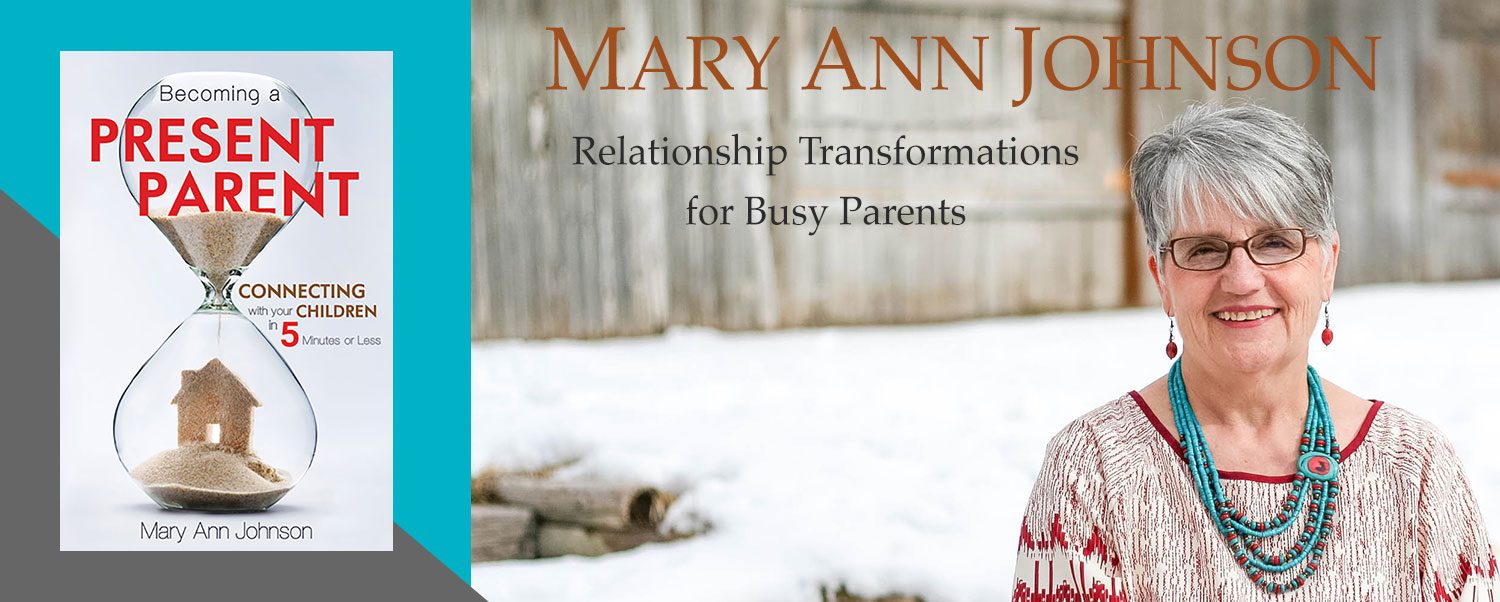
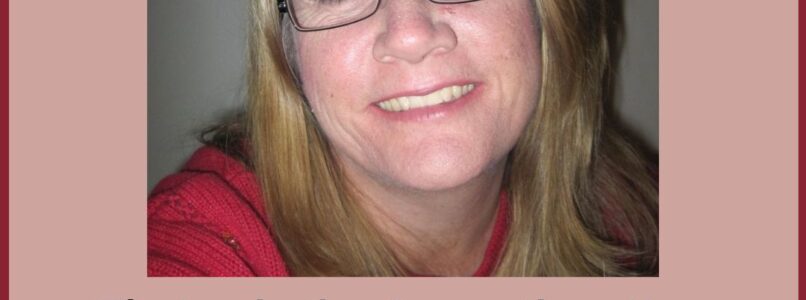
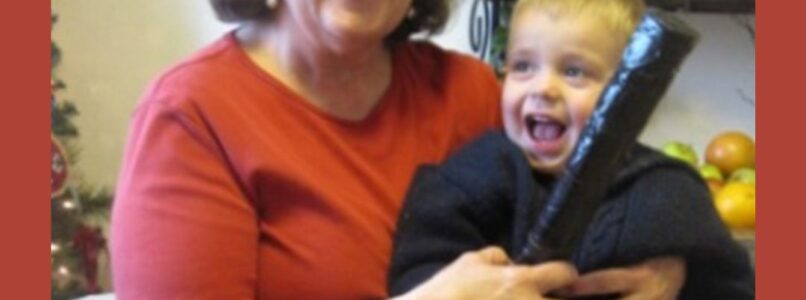
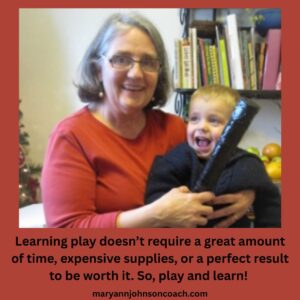
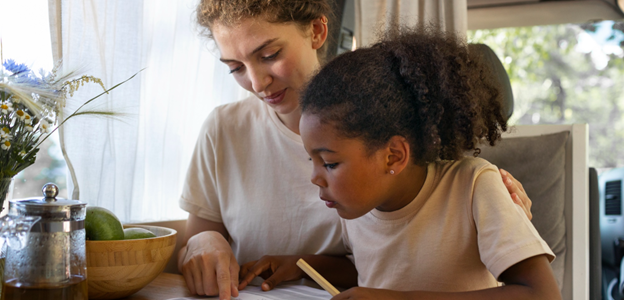
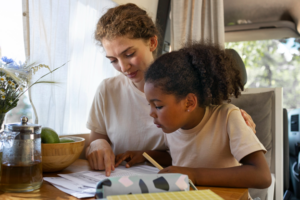
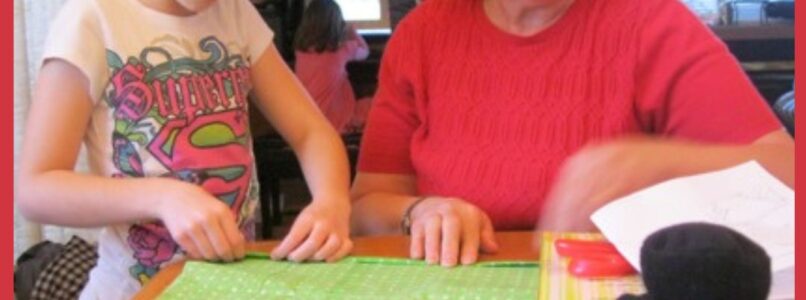
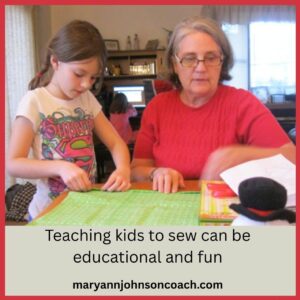 In 2012, the week after Christmas, Don and I traveled to Colorado to visit our grandkids. We loved and missed our daughter and her husband, but we went to see the grands! I’m always grateful for the time we took, in those early days, to spend time with them. Ashley, the grand in this story, is now in her mid-twenties and a wonderful hairdresser. They grow so fast, and you can’t reclaim their childhood. Hence, the perilous drive in the winter. : )
In 2012, the week after Christmas, Don and I traveled to Colorado to visit our grandkids. We loved and missed our daughter and her husband, but we went to see the grands! I’m always grateful for the time we took, in those early days, to spend time with them. Ashley, the grand in this story, is now in her mid-twenties and a wonderful hairdresser. They grow so fast, and you can’t reclaim their childhood. Hence, the perilous drive in the winter. : ) them their job is to push the material forward into the feed dog, and keep a straight line. Then I worry about the pedal. That way, they learn to do one thing before trying to do two.
them their job is to push the material forward into the feed dog, and keep a straight line. Then I worry about the pedal. That way, they learn to do one thing before trying to do two.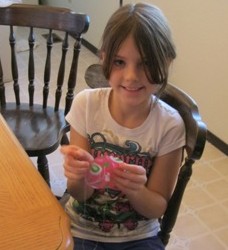
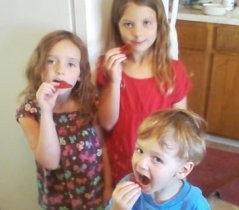
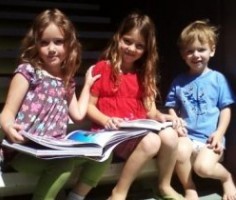 Later, I found Lizzy and Ashley sitting at the bottom of the stairs, looking at the books they brought home from the library. They had originally gone out to ride their scooters, but the books were so compelling that they never made it to the driveway. They were comparing the crystals in each other’s books, chatting away about the shapes, sizes, and colors.
Later, I found Lizzy and Ashley sitting at the bottom of the stairs, looking at the books they brought home from the library. They had originally gone out to ride their scooters, but the books were so compelling that they never made it to the driveway. They were comparing the crystals in each other’s books, chatting away about the shapes, sizes, and colors.
 Remember that monthly call I have with my friend Joy Petty? We had another invigorating conversation I want to share. I’m no expert on this topic, but I have had experience with it. Joy is an expert.
Remember that monthly call I have with my friend Joy Petty? We had another invigorating conversation I want to share. I’m no expert on this topic, but I have had experience with it. Joy is an expert.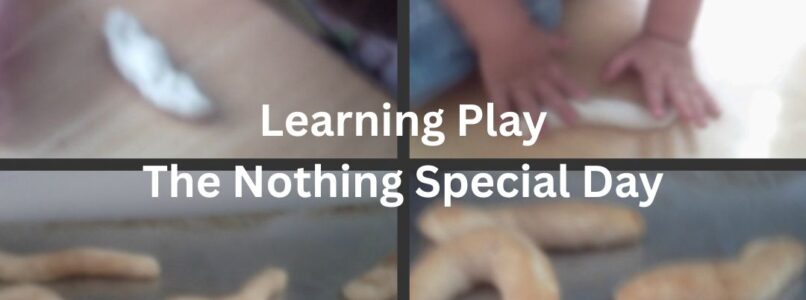
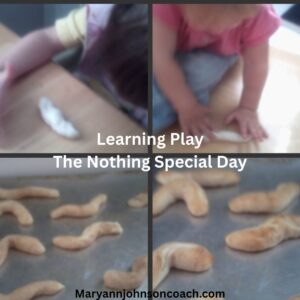 Back in the day, when my grands were small, I did many learning activities with them. I enjoyed it and so did they. As I mentioned earlier this spring, I’m sharing some of those past learning activities with you because you can have as much enjoyment and fun with your children or grands as I did. Sometimes all we need is an idea, and then we can run with it. So here goes!
Back in the day, when my grands were small, I did many learning activities with them. I enjoyed it and so did they. As I mentioned earlier this spring, I’m sharing some of those past learning activities with you because you can have as much enjoyment and fun with your children or grands as I did. Sometimes all we need is an idea, and then we can run with it. So here goes!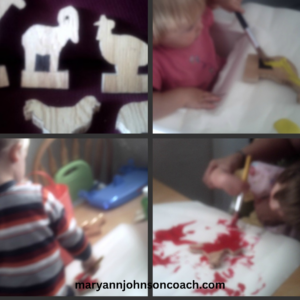 paper. When they were done and wanted another animal and a different color, we traded papers. Grandpa was very satisfied with the result. This particular range wouldn’t have his usual perfection, but it had memories and was fun to use.
paper. When they were done and wanted another animal and a different color, we traded papers. Grandpa was very satisfied with the result. This particular range wouldn’t have his usual perfection, but it had memories and was fun to use.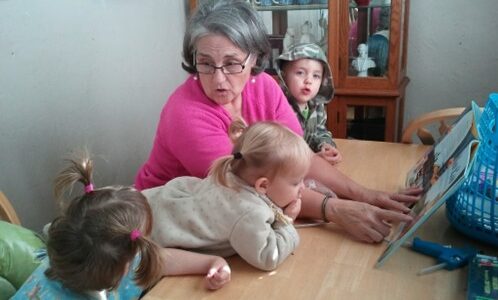
 One day in 2011, I found the most amazing book at the library!!! I happened across it accidentally. It was about Leonardo Da Vinci and the amazing visions he had. But that wasn’t all. The book showed how, in time, all his inventive ideas were created by other people and who those people were. Oh my gosh, I wanted to share this with my grands.
One day in 2011, I found the most amazing book at the library!!! I happened across it accidentally. It was about Leonardo Da Vinci and the amazing visions he had. But that wasn’t all. The book showed how, in time, all his inventive ideas were created by other people and who those people were. Oh my gosh, I wanted to share this with my grands. Our Super-duper Rocket-propelled Robot
Our Super-duper Rocket-propelled Robot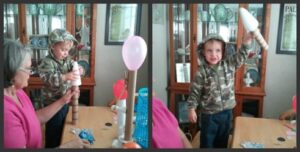
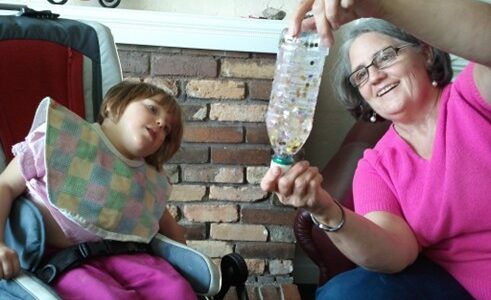
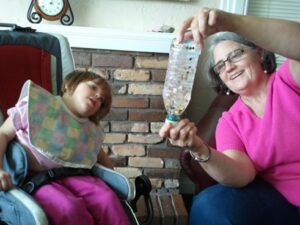 Summer is the perfect time to learn about stars because after you do a few fun activities, you can lie under the stars as a family, breathe the air, and stare into the night sky. What a relaxing thing to do. As I said a few weeks ago, this summer I am sharing some old grandma school times I had with my grands back in 2011. Bigger kids like helping younger ones, so even though these are simple things, you can do them as a family and get the older kids involved. Just don’t pick a Friday or Saturday night. : )
Summer is the perfect time to learn about stars because after you do a few fun activities, you can lie under the stars as a family, breathe the air, and stare into the night sky. What a relaxing thing to do. As I said a few weeks ago, this summer I am sharing some old grandma school times I had with my grands back in 2011. Bigger kids like helping younger ones, so even though these are simple things, you can do them as a family and get the older kids involved. Just don’t pick a Friday or Saturday night. : )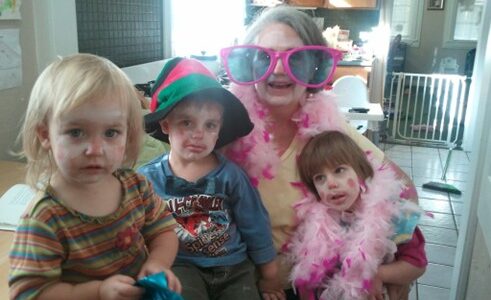
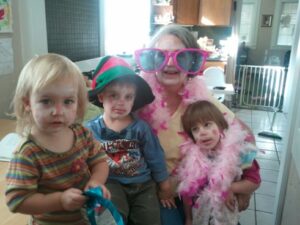
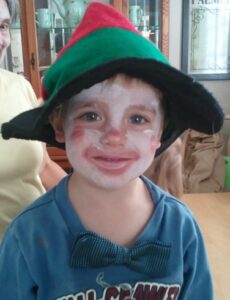 white face paint and lipstick. The white face paint was Halloween makeup I bought many years ago. It worked well enough. For red, we used what grandma had, lipstick. As I say, keep it simple. Then we tried on all the glasses, boas, ties, and other costume items. Jack fell in love with a hat and a bow tie. He asked me if he could have them. I said he could surely borrow them. “I don’t like borrow” he said, “I want to have them!” LOL
white face paint and lipstick. The white face paint was Halloween makeup I bought many years ago. It worked well enough. For red, we used what grandma had, lipstick. As I say, keep it simple. Then we tried on all the glasses, boas, ties, and other costume items. Jack fell in love with a hat and a bow tie. He asked me if he could have them. I said he could surely borrow them. “I don’t like borrow” he said, “I want to have them!” LOL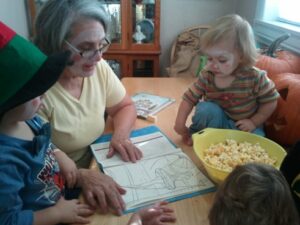 sometimes we aren’t! We managed with what we had, and I made a circus book. I found a terrific site of circus pictures, printed them off, and put them into a binder. (Jack, Mary, and Maggie used it until it fell apart.) It also made a great circus coloring book.
sometimes we aren’t! We managed with what we had, and I made a circus book. I found a terrific site of circus pictures, printed them off, and put them into a binder. (Jack, Mary, and Maggie used it until it fell apart.) It also made a great circus coloring book.